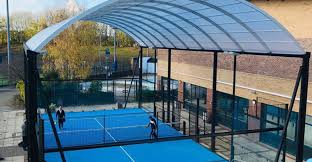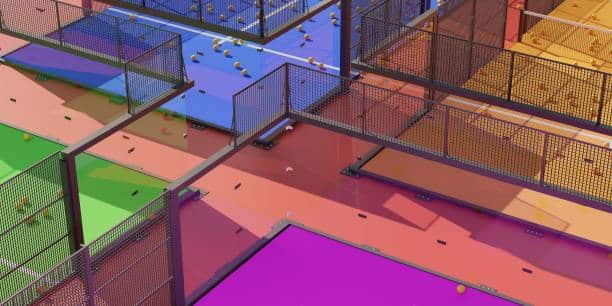When exploring the dynamic world of sports infrastructure in China, particularly the burgeoning field of padel courts, potential investors and enthusiasts are faced with a crucial question What is the current pricing landscape for padel courts in China? With an increasing number of people expressing interest in padel, understanding the cost dynamics is vital for anyone looking to enter the market or simply to enjoy the sport.

Padel, with its roots in Mexico and burgeoning popularity in Europe, has carved out a niche for itself in China over recent years. The sport is praised for its accessibility and fun, making it a hit among various age groups. As the interest grows, so does the demand for quality infrastructure, prompting a need for clarity concerning the associated costs.
The Cost Elements Involved

The price of constructing a padel court in China, like anywhere else, is influenced by several factors that collectively determine the total investment required.
Core components include
1. Land Acquisition and Preparation Among the initial costs is securing a location, which can vary extensively based on urban or rural settings. In major cities, the cost can be substantially higher due to premium land prices, while rural or suburb areas might offer more competitive rates. Site preparation, including leveling and drainage, adds to the initial expenditure.
2. Construction Material and Quality The choice of materials significantly influences the price. High-quality glass walls, flooring, fencing, and artificial turf can enhance the overall playing experience but at a higher cost. It's crucial to balance durability and quality with budget considerations to ensure longevity and player safety.
3. Labor Costs Employing skilled labor for installation and ongoing maintenance is essential. Labor costs fluctuate based on regional economic conditions and the complexity of the construction.
4. Regulatory and Permit Costs Navigating the local regulatory landscape is another significant aspect, as permits and compliance with safety standards have associated costs.
5. Additional Features Lighting, seating, and branding (for commercial courts) are additional elements that might influence pricing. Enhanced lighting systems, for instance, not only improve gameplay visibility during evening hours but also elevate operational costs.
china padel court price
The Pricing Spectrum in China
In China, padel court construction can range from RMB 150,000 to over RMB 400,000 per court, depending on the aforementioned factors. Urban centers like Beijing or Shanghai could see costs trending on the higher end due to expensive land prices and higher labor costs.
Case Studies and Examples
A notable example is a prominent sports facility in Shanghai that recently invested in four high-end padel courts. Their substantial budget allocation primarily went towards premium flooring and state-of-the-art lighting systems. The strategy was not just about providing a court but creating a comprehensive sports experience that appeals to professional and amateur players alike.
Conversely, a sports club in Chengdu managed to construct standard padel courts with a keen emphasis on affordability, serving the local community. By selecting cost-effective materials without compromising safety standards, they successfully balanced cost with functionality, catering well to grassroots level enthusiasts.
Market Trends and Futures
The trajectory for padel in China suggests sustained growth. More sports clubs and universities are considering integrating padel facilities, recognizing its popularity. This rising demand heralds competitive pricing and innovation in court construction, with suppliers and service providers poised to capture market share by offering custom solutions.
Conclusion Entering the Padel Arena
For investors and sports facility managers eyeing the padel landscape, understanding these price components and market dynamics is vital. China's padel scene presents lucrative opportunities underscored by strategic investment in quality court construction. As more people embrace padel, staying informed of pricing trends and leveraging quality will be pivotal in carving out a successful niche in this vibrant market. The growth potential remains promising, with expert insight and strategic planning positioning stakeholders for success in the evolving padel court arena in China.



